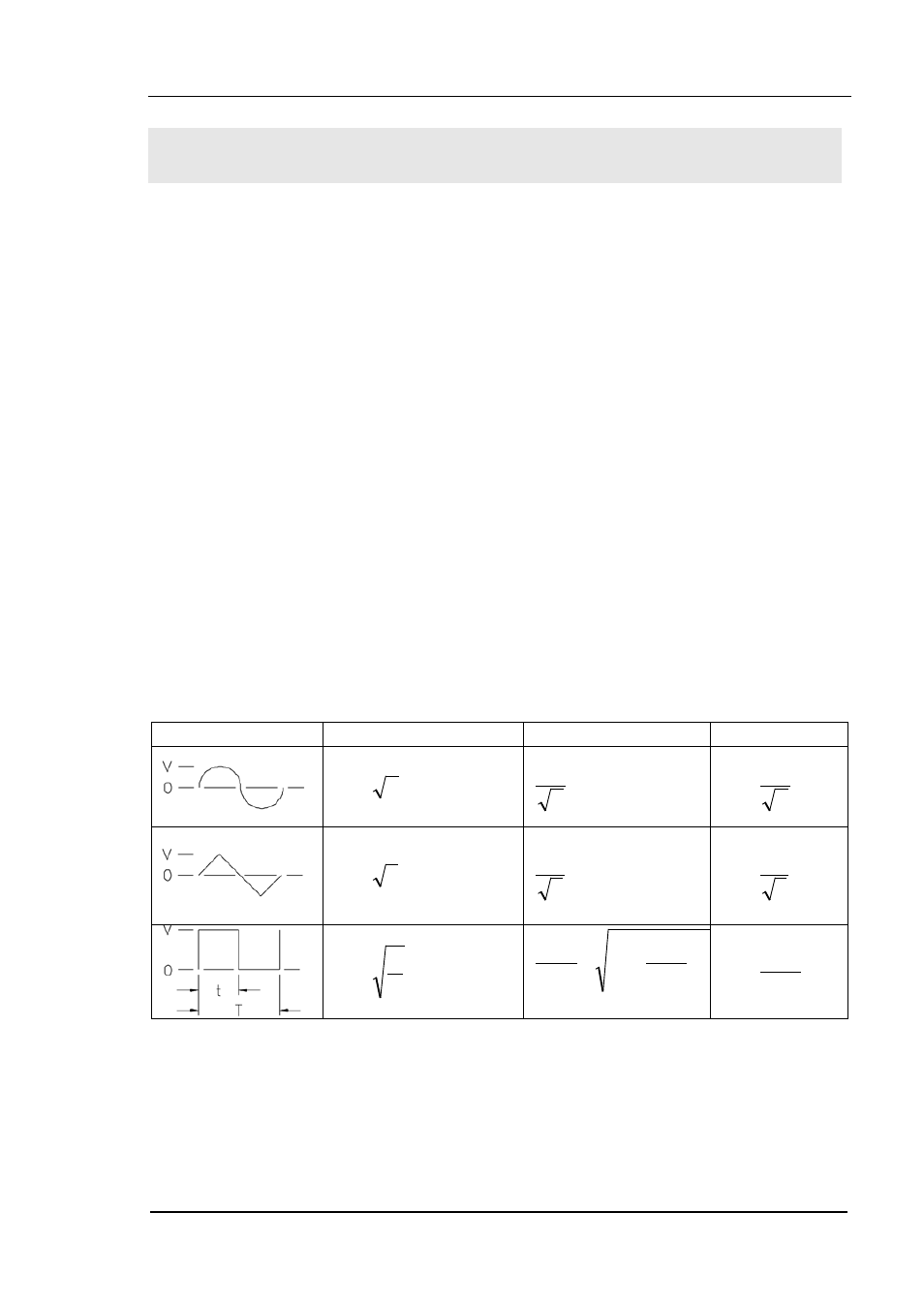Measurement tutorial, True rms ac measurements, Chapter 5 measurement tutorial -1 – RIGOL DM3058 User Manual
Page 119: True rms ac measurements -1, Chapter 5 measurement tutorial

RIGOL
User’s Guide for DM3058/DM3058E
5-1
Chapter 5 Measurement Tutorial
True RMS AC Measurements
The AC measurement of DM3058/DM3058E has true RMS response. The power
dissipated in a resistor within a time is proportional to the square of the measured
true RMS voltage, independent of wave shape. This multimeter can accurately
measure true RMS voltage or current, as long as the wave shape contains
negligible energy above the multimeter’s effective bandwidth. The effective AC
voltage bandwidth of DM3058/DM3058E is 800kHz and the effective AC current
bandwidth is 100kHz.
The multimeter's AC voltage and AC current functions measure the “AC coupled”
true RMS value, that is to measure the RMS value of the AC component (DC
component is rejected) of the input signal.
For sine waves, triangle waves, and square waves, the AC and AC+DC values are
equal since these waveforms do not contain a DC offset. See table 5-1 below.
Table 5-1 True RMS AC Measurement of Sine, Triangle and Square waves
Waveform
Crest Factor (C.F.)
AC RMS
AC+DC RMS
2
2
V
2
V
3
3
V
3
V
t
T
2
.
.
1
1
.
.
−
×
F
C
F
C
V
.
.F
C
V
Non-symmetrical waveforms, such as pulse trains, contain DC voltages which are
rejected by AC coupled true RMS measurements.
An AC coupled true RMS measurement is desirable in situations where you are
measuring small AC signals in the presence of DC offsets. For example: measuring